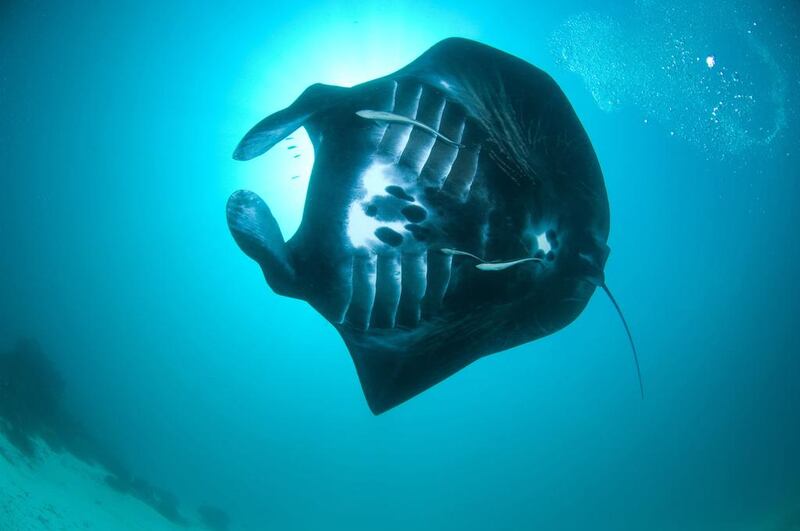JAKARTA // Indonesia is now the world’s largest sanctuary for manta rays, after officials were persuaded by evidence that the gentle giants known for delighting tourists are worth more alive than dead.
The government on Friday announced that manta rays within the archipelago’s 5.8 million square kilometers of ocean will be protected from fishing and export. It will take time and cooperation at multiple levels to enforce the ban on poaching in the biggest global shark and ray fishery.
Conservationists point to simple economics as an incentive. According to a study published last year in the online journal PLoS One, a manta ray is worth up to US$1 million (Dh3.67m) over the course of its long lifetime, thanks to tourists willing to pay generously for a chance to swim with the curious creatures that glide gracefully through the water by flapping their wide wings, almost as if flying.
They are worth only $40 to $500 dead.
Government officials were “so surprised that the tourism value is very high. That’s a very powerful argument”, said Tiene Gunawan, marine programme director at Conservation International Indonesia. “Indonesia is such a big, big, big country. When looking at the size of the water, it’s huge. And I think we should start small and make some kind of pilot for this enforcement.”
The regulation was passed on January 28. Conservation groups are working to teach fishermen about the value of keeping the mantas alive, while business people, the military, water police and local officials are being engaged to assist.
“There are more than 200 special policemen who have been prepared to guard conservation areas and to enforce the law on protection of this species,” Sudirman Saad, director general for marine, coastal and small islands, said yesterday.
The government will encourage fishermen affected by the ban to take advantage of manta ray tourism.
In some areas, including a well-known spot near Bali, residents are already seeing profits from taking snorkelers out on their fishing boats, or working at larger dive resorts where mantas are a top attraction.
In Indonesia alone, manta tourism brings in an estimated $15m each year, according to the PLoS One report.
“Indonesia now has the second-largest manta ray tourism industry in the world,” Agus Dermawan, director of the country’s Marine Conservation Directorate, said. “Given the huge area of reefs and islands in our country, if managed properly, Indonesia could become the top manta tourism destination on the planet.”
Two types of rays exist in Indonesia, the manta and the mobula. Both are killed for their plankton-filtering gills, which are used for medicinal concoctions, mainly in China. Mantas are also frequently caught accidentally by fishermen, but they are not part of a major targeted industry in Indonesia as in other countries, such as Sri Lanka.
Increased demand has led to a sharp drop in manta numbers in recent years, raising international concern.
In addition to Indonesia, manta fishing is banned in Australia, Ecuador, the European Union, Mexico, New Zealand, the Philippines, Guam, the Micronesian island of Yap, the Northern Mariana Islands and the U.S. states of Hawaii and Florida.
* Associated Press





